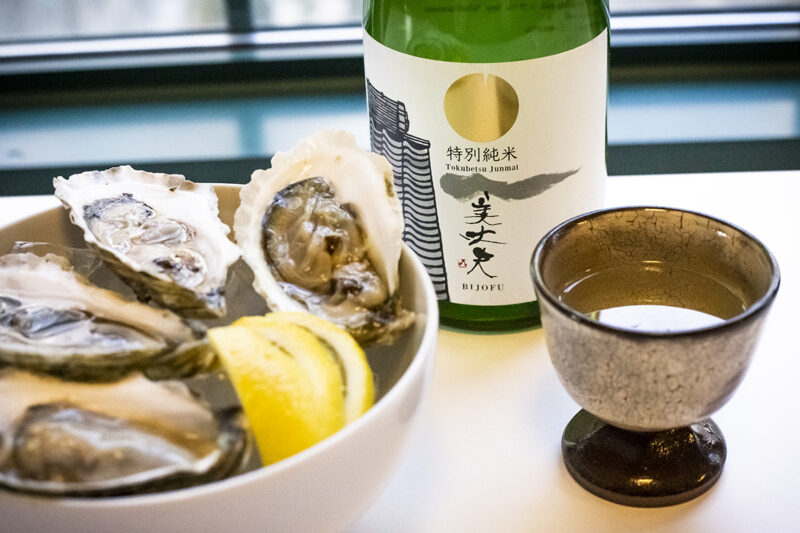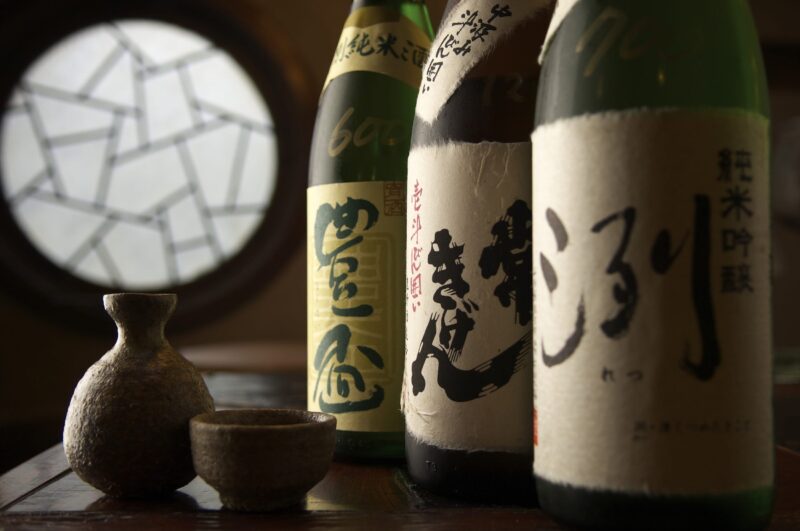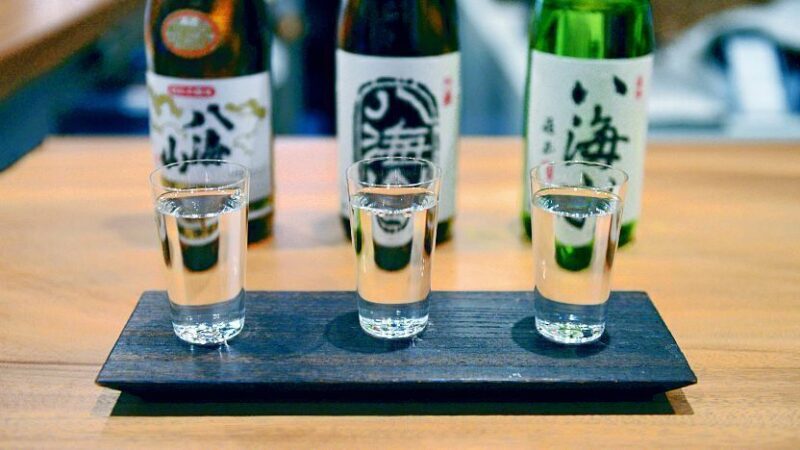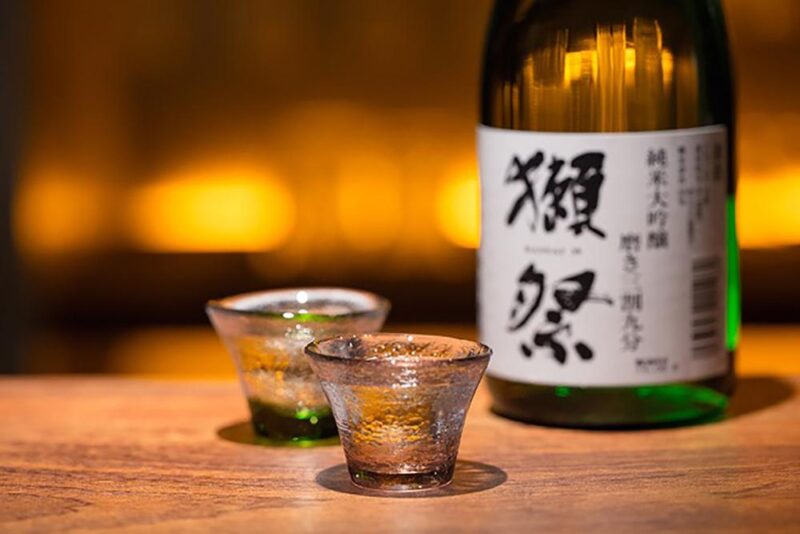As sake, the quintessential Japanese rice wine, continues to grace the international culinary stage, an increasing number of people are drawn to its sophisticated allure. This surge in global popularity has fostered a blossoming community of sake enthusiasts, individuals whose curiosity extends beyond the glass and into the rich cultural tapestry that imbues every drop of this extraordinary beverage. This blog post aims to equip you with the knowledge you need to cultivate an informed, passionate appreciation for sake, inviting you on a journey that promises to be as enlightening as it is enjoyable.
Understanding Sake Basics

Rice wine is an embodiment of Japan’s heart and soul. It is steeped in traditions that span centuries, crafted from four humble ingredients: rice, water, yeast, and koji—a special mold integral to fermentation. Each ingredient plays a pivotal role in determining sake’s final profile, transforming through a meticulous brewing process that reflects the profound respect the Japanese hold for time, patience, and the art of perfection.
Grasping the essence of different rice wine types is crucial for any enthusiast. There’s Junmai-shu, pure rice sake, Honjozo-shu, to which a small amount of brewer’s alcohol has been added, and the premium Ginjo-shu and Daiginjo-shu, crafted from highly polished rice. As you delve deeper, you’ll find yourself immersed in a lexicon uniquely associated with this beverage, with terms like ‘nihonshu’ (literal translation of sake), ‘ginjo’ (indicating premium sake), and ‘kura’ (sake brewery). These linguistic nuances not only refine your understanding but also enhance your overall rice wine experience.
Exploring Sake Tasting
Sake tasting is a captivating sensory journey that offers far more than just the simple act of drinking. It begins with visual appreciation, observing the color and clarity of the sake in your glass. Follow this with olfactory exploration – its aroma can span a fascinating spectrum from fruity to floral, earthy, or even savory.
When tasting, savor the interplay between sweetness and acidity and pay attention to its texture – does it feel velvety, creamy, or crisp on your palate? To refine your tasting skills and broaden your wine horizons, consider organizing a simple tasting session at home or attending professional sake tasting events.
Pairing It With Food

The art of pairing sake with food is a delightful aspect of rice wine appreciation. Unlike wine, sake’s lower acidity and rich umami profiles make it a versatile companion for a range of dishes. Light, floral kind might pair beautifully with delicate flavors of sushi or sashimi, while heartier, robust rice wines could complement grilled or fried dishes perfectly.
The guiding principle is to balance the intensity and flavors of the food with those of the rice wine. As with any pairing, experimentation and personal preference play crucial roles. Don’t be afraid to try diverse combinations – sake’s world is far more extensive than just Japanese cuisine!
Visiting Sake Breweries
Visiting sake breweries opens an authentic window into the brewing process and deep-seated traditions that lie at the heart of sake production. Japan is home to thousands of breweries, each with its unique history, techniques, and flavors. Most breweries offer tours, allowing visitors to explore the brewing facilities, learn about the sake-making process, and taste their products.
Before you embark on a brewery tour, research about the rice wine brewing season, which typically falls in the cooler months. Remember to respect the customs and traditions at the brewery, and don’t hesitate to ask questions—the more you know, the more you’ll appreciate each sip of rice wine.
Learning from Experts
The realm of sake is vast and sometimes intricate. Learning from rice wine experts can greatly enhance your understanding and appreciation. Certified sommeliers, scholars, and experienced brewers have valuable insights to share. Many offer online courses, workshops, and have written books on this beverage. If you’re interested you can visit this site and get your sake course right away.
Apart from these, attending sake festivals and events also provide opportunities to learn directly from industry professionals. You can explore different types of rice wine, participate in tastings, and interact with fellow enthusiasts, creating a dynamic learning environment.
Exploring Sake Varieties and Regions

Just as with wine, sake’s profile is shaped by its terroir—the natural environment in which it’s produced, including factors like the quality of water, the variety of rice, and regional climate. From the delicate, clean flavors of Niigata’s sakes to the rich and robust expressions of Hiroshima, each region imparts its unique signature.
Taking the time to explore these regional varieties can significantly deepen your understanding and enjoyment of rice wine. Whether you do this through travel or tasting events, remember that the goal is to enjoy the journey, one sip at a time.
Collecting and Cellaring
For some, part of the joy in sake appreciation lies in collecting and cellaring. Rice wine, unlike wine, doesn’t necessarily improve with age. However, there’s an exception: ‘koshu’, or aged sake. When properly stored, some types develop fascinating complexities over time. If you’re interested in collecting, ensure to store sake bottles in cool, dark conditions and typically consume within one to two years.
Creating Cocktails and Infusions

With the boom in craft cocktails, sake has found its way into the mixologist’s repertoire. Its versatility lends itself to various flavor profiles, making it an exciting base or component in cocktails. Infusing it with other flavors, like fruits, herbs, or spices, can also yield fascinating results.
There’s a lot of creativity and personal expression in crafting sake cocktails or infusions. Whether you follow established recipes or invent your own, this process can add an enjoyable and inventive dimension to your rice wine appreciation journey.
Participating in Appreciation Events
Sake appreciation events are ideal for expanding your knowledge and palate. They range from local tasting sessions to major international festivals. These events offer you a chance to explore new brands, learn from experts, and network with other enthusiasts.
Most importantly, they provide a sense of community. Participating in these events, whether in person or virtually, allows you to become part of a global fellowship of rice wine lovers – an invaluable aspect of any sake appreciation journey.
Contributing to the Community

Active participation in the sake community not only enhances your own understanding and appreciation but also contributes to the collective knowledge base. Joining an appreciation society or participating in online forums allows you to share your experiences, insights, and recommendations. It also provides a platform for you to learn from others, exchange ideas, and engage in insightful discussions.
Conclusion
In the world of sake appreciation, the journey is just as important as the destination. As you deepen your understanding, refine your palate, and engage with the community, you’ll likely find that your passion for rice wine continues to grow. Each glass, each sip, and each shared experience is a step forward on this exciting journey. So here’s to you, fellow sake enthusiast, as you embark on this path of discovery and appreciation. Kanpai!

